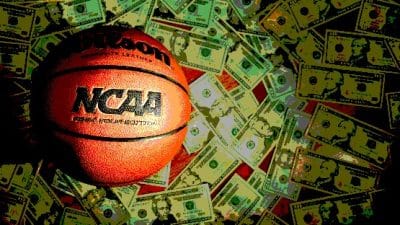Golf Things Considered column by John Rogers
[email protected]
Welcome to Golf Things Considered, a roving weekly column dedicated to anything and everything related to the game of golf.
As a teaching professional I have access to and a good view of what’s going on in the world of golf. From instruction to the latest in equipment, the professional tours, local golfer success stories, golf-course reviews and whatever else comes up; this space is dedicated to the most intriguing, beguiling, satisfying and often frustrating game we play.
Tiger Watch
The big question about the PGA Tour these days is what’s up with Tiger Woods. There’s no denying that, by his standards, he is in a slump. He has won only a single tournament this season (the WGC-Accenture Match Play Championship), his lowest output since 1998, when his swing was in the shop for repairs, and he beat the field just once. By contrast, he has won at least five tournaments in each of the past five seasons.
It has been more than two years since Tiger won a major. His grip on the number one spot in the world rankings has been loosened but not yet lost as Ernie Els plods steadily along. Tiger’s scoring average is also a full stroke higher than previous seasons when he continually won the Vardon Trophy for lowest scoring.
Granted, he has 10 top 10 finishes in 14 tournaments, and the Match Play tournament he won is a tough test. These stats would have put him in the hunt for Player of the Year in years past, but there are too many other players winning multiple tournaments these days for Tiger’s numbers to be competitive.
So what gives? It seems that there are two main theories floating around in the golf world about Tiger’s performance problems.
First there’s the fiancé issue. People are quick to point out that The Slump seems to coincide with Tiger’s dating and eventual engagement to his voluptuous Swedish girlfriend and model, Elin Nordegren. The insinuation is that Tiger is in love and therefore distracted, unable to keep up the single-minded focus he has been known for since he took over the world of golf.
Some guys take the fiancé theory a step further by suggesting that Tiger is, shall we say, physically drained. It’s as if his competitive male hormones are spent, like he is some sort of human flat tire. This argument is usually given with a knowing sort of wink-wink attitude, and a voice somewhere between empathy and envy as if to say, “Man, I’d have a hard time breaking a hundred if she was my girlfriend.”
I don’t know what to think about the fiancé theory, but one thing sticks in my mind – the last time I can remember Tiger making one of those superhuman, all the marbles on the line, glare at the ball until it runs and hides in the nearest hole-type putts was at the President’s Cup last fall. That was when he held off Els, the sun went down, the U.S. and International teams had a convention on the green, and it was decided that the tournament would be called a draw. I think it was that very night that Tiger proposed to his girlfriend.
Tiger admitted that proposing to Nordegren made him more nervous than playing tournament golf. Maybe that’s when he realized that he is human. He knew what it was to feel fear, and he realized, perhaps for the first time, that life is a team sport. Since then, the driver goes wide-right, and the putts don’t seem to drop as often.
But there is another theory. The Slump also started soon after Tiger and his coach, Butch Harmon, parted ways. Tiger claimed that he knew his own swing well enough to go without a coach, and his buddy Mark O’Meara was there to help keep things from going astray.
Club pros tend to disagree; we think that Tiger should get back together with his coach. Harmon is the man who took Tiger’s long, flippy, inconsistent junior-golf swing and turned it into the compact machine-like masterpiece that dominated professional golf for five years. With Harmon’s help, Tiger learned to keep his tee ball inside the park, and to control the distance of his wedge shots. Combine that with softer hands on the putter and Tiger’s unflappable mental approach, and the young man from Stanford was almost unbeatable.
Now, though, Tiger is ranked 170th on tour in driving accuracy. If his other stats were equally bad (and disregarding his exempt status for winning majors), he would be headed to Q-School. He still leads the tour in making birdies when he hits the green, but it’s tough to hit the green from the scrub brush, parking lots and patios he seems to be driving into these days. And the clutch putts don’t seem to fall, like last weekend when he had a good look at birdie on all of the final nine holes; he made a few, but could not pull away from Carlos Franco, let alone catch John Daly and Vijay Singh.
Without seeing him in person or in slow motion, it is difficult to see what’s wrong with Tiger’s swing. I do see one thing, though. In the downswing, his spine and head drop significantly. As a result he has to keep his wrists cocked longer as he approaches impact, or else he’ll hit behind the ball. The delayed uncocking of the wrists makes it tougher to square the clubface, and he is therefore prone to blocking the ball to the right. But Tiger did not exactly ask for my opinion, so maybe he should swallow his pride and go knocking on Butch’s door.
So there are a couple of theories that might explain why Tiger Woods no longer dominates professional golf. Whatever the reason, many of us (including the television broadcasters) are hoping for an end to The Slump. The PGA Tour seems more exciting when everyone is chasing Tiger than when they are actually catching him.
From where I’m sitting (and I hope my golf students are reading) the moral of the story is this: Tempting as it might be, don’t trade your coach for a beautiful blond unless you’re really in love and you’re willing to hear people talk about the demise of your golf game.










